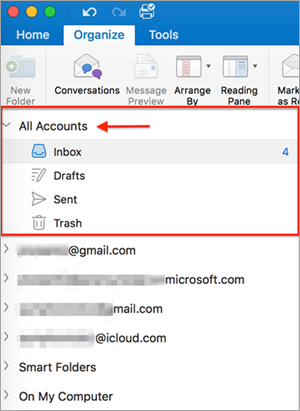

To change the criteria for a rule, click the rule, and then click Condition.To temporarily turn off a rule, clear the check box for that rule.To delete a rule, click the rule, and then click Delete.In addition, any conditional formatting rules that you created in the Organize pane with an earlier version of Outlook appear. This rule makes unread messages appear bold in the message list.
/change-unread-messages-highlight-outlook-1173663-1-3a48fdf681234d3b886207ffce2b8aa4.png) In the Advanced View Settings dialog box, click Conditional Formatting.Ī set of default rules appears. On the View tab, in the Current View group, click View Settings. You specify conditions that an incoming message should meet, such as a sender’s name or email address, and then conditional formatting is applied only to those messages.įor example, a conditional rule can specify that all messages sent from your manager appear in red text in the message list.Ĭreate an Outlook conditional formatting rule to change color or font In Microsoft Outlook 2010, conditional text formatting is now accessed in the Advanced View Settings dialog box.Ĭonditional formatting is a way to make messages that meet defined conditions stand out in the message list by using color, fonts, and styles. In earlier versions of Microsoft Outlook, the Organize feature enabled you to create conditional text formatting rules for email messages. Where in the world did the “Organize” feature go in outlook?
In the Advanced View Settings dialog box, click Conditional Formatting.Ī set of default rules appears. On the View tab, in the Current View group, click View Settings. You specify conditions that an incoming message should meet, such as a sender’s name or email address, and then conditional formatting is applied only to those messages.įor example, a conditional rule can specify that all messages sent from your manager appear in red text in the message list.Ĭreate an Outlook conditional formatting rule to change color or font In Microsoft Outlook 2010, conditional text formatting is now accessed in the Advanced View Settings dialog box.Ĭonditional formatting is a way to make messages that meet defined conditions stand out in the message list by using color, fonts, and styles. In earlier versions of Microsoft Outlook, the Organize feature enabled you to create conditional text formatting rules for email messages. Where in the world did the “Organize” feature go in outlook? #OUTLOOK 2016 FOR MAC FONT COLOR UNREAD HOW TO#
Tagged 100 / GURU-Tip / How To / Office 2010 / Verified



/change-unread-messages-highlight-outlook-1173663-1-3a48fdf681234d3b886207ffce2b8aa4.png)


 0 kommentar(er)
0 kommentar(er)
